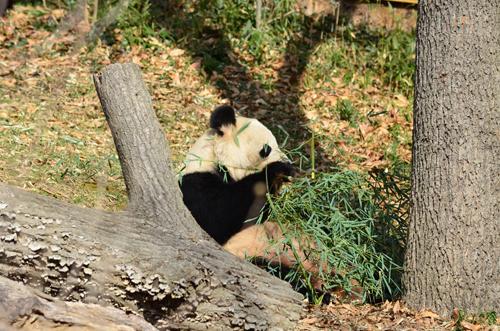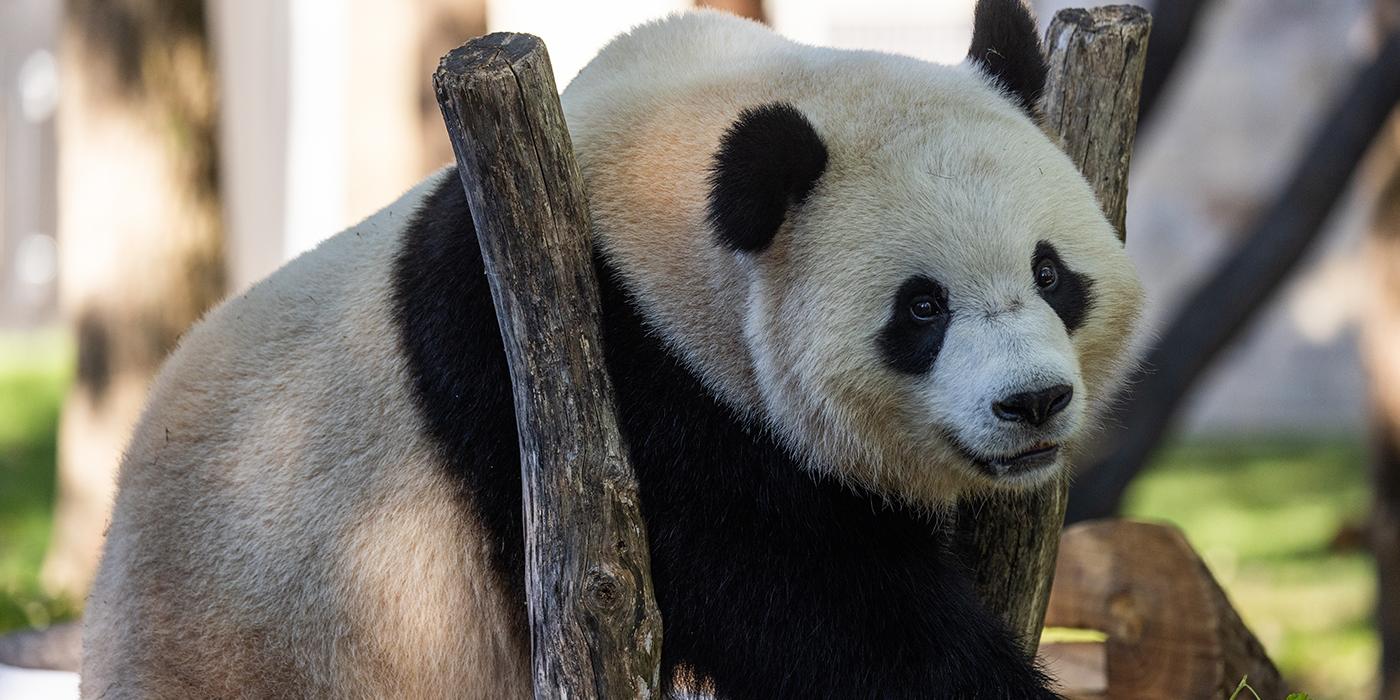Giant panda Update Apr 9, 2013
This week's Giant Panda Update is from Mike Maslanka, head of the Department of Nutrition Science at the Zoo.
It's 6:15 a.m. It's dark and cold outside. Many folks around D.C. are still arguing with the snooze button. But in the morning darkness, the garage door of the Commissary at the Smithsonian's National Zoo slowly opens and a truck full of bamboo rolls out for the early morning bamboo delivery. This scene is repeated 365 days a year.
The Department of Nutrition Science at the National Zoo is responsible for providing diets for every animal living at the Zoo every day ? and that of course includes our two giant pandas, Mei Xiang and Tian Tian. It sounds simple enough ? cut some bamboo and deliver it to the David M. Rubenstein Family Giant Panda Habitat ? but the process is actually a bit more complicated.
Even though pandas also get a small amount of produce and a biscuit, the majority of their diet is bamboo, and the need for bamboo never stops. Until about two weeks or so ago, the pandas were offered a little over 100 pounds of bamboo each day. We don't know how many different species of bamboo giant pandas eat in the wild, but we have found that Mei Xiang and Tian Tian have eaten five or six species well. Satisfying giant appetites like that takes much more bamboo than we grow at the Zoo or the Smithsonian Conservation Biology Institute. We harvest bamboo from nearly 20 different sites around the Washington, D.C. area. The harvest locations range from historic sites (those we've used for 20 years or more) to more recent finds (locations we have found in the last five years). All together our bamboo stands encompass probably 14 to 15 hectares (which is between 35 and 37 acres).
All of the bamboo we feed to all of our animals has to meet stringent animal care standards. Prior to harvesting, we sample each stand of bamboo to ensure it is safe. We examine not only nutrients, but also potential contaminants that could be on or in the bamboo. The location of the bamboo stand is also important when determining if the bamboo growing on it is safe for our animals. We take into consideration if there is any pollution in areas around the bamboo stand, and we have to make sure the stand is safe to work in and around. Since the pandas and many of our other animals need bamboo every day, we also don't want to harvest an entire stand at once. So, we typically don't harvest from stands smaller than a full acre.
We want to have stands to harvest from for many years to come. We can't harvest too much from a single stand without having negative impacts on stand health and regrowth, so we rotate between all of our stands. The support that we receive from the community helps us care for and keep our pandas healthy.
Related Species:




